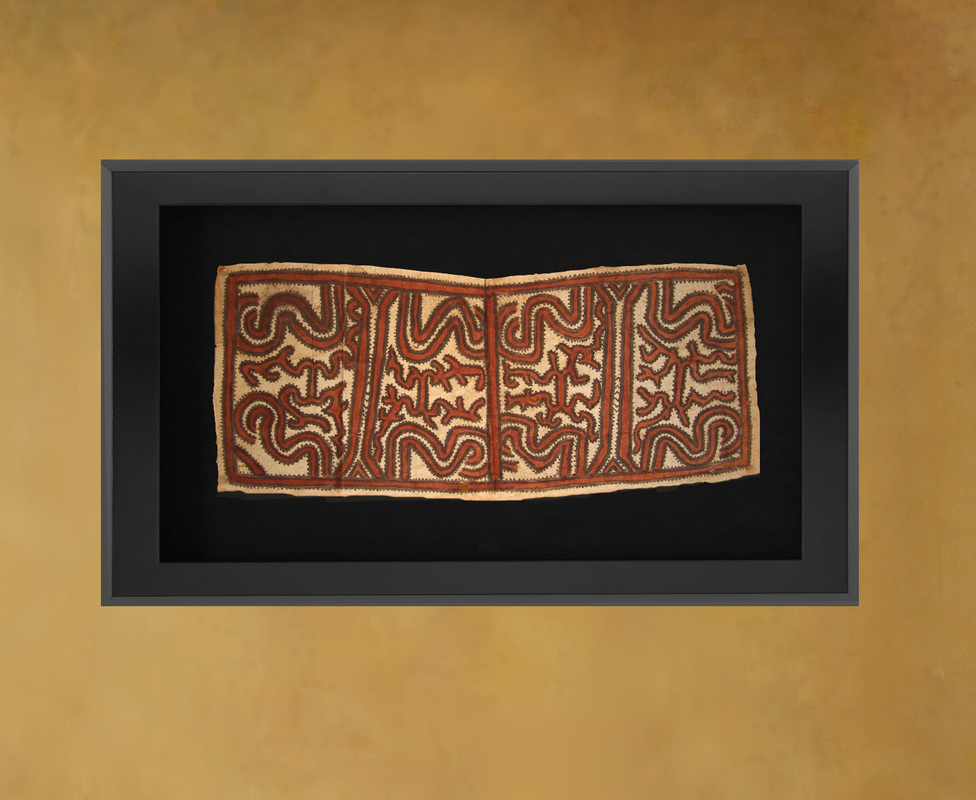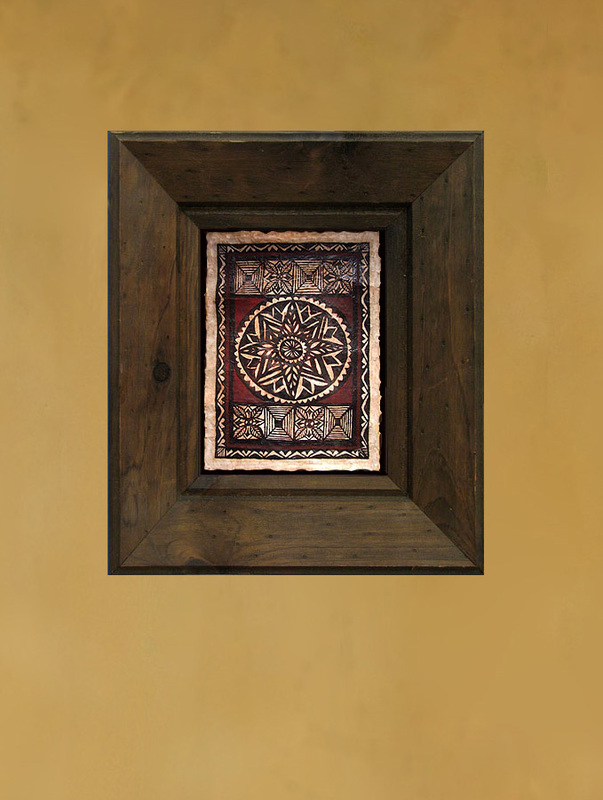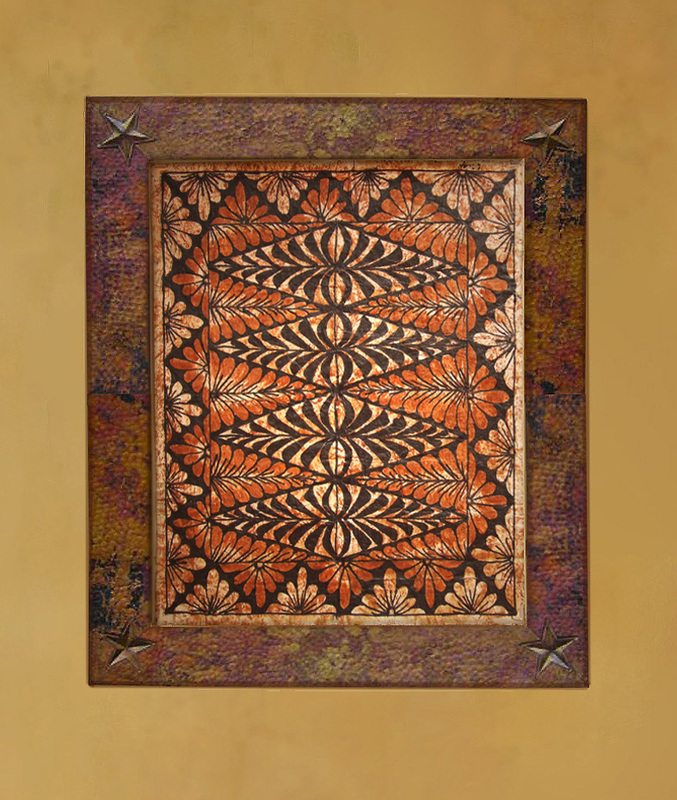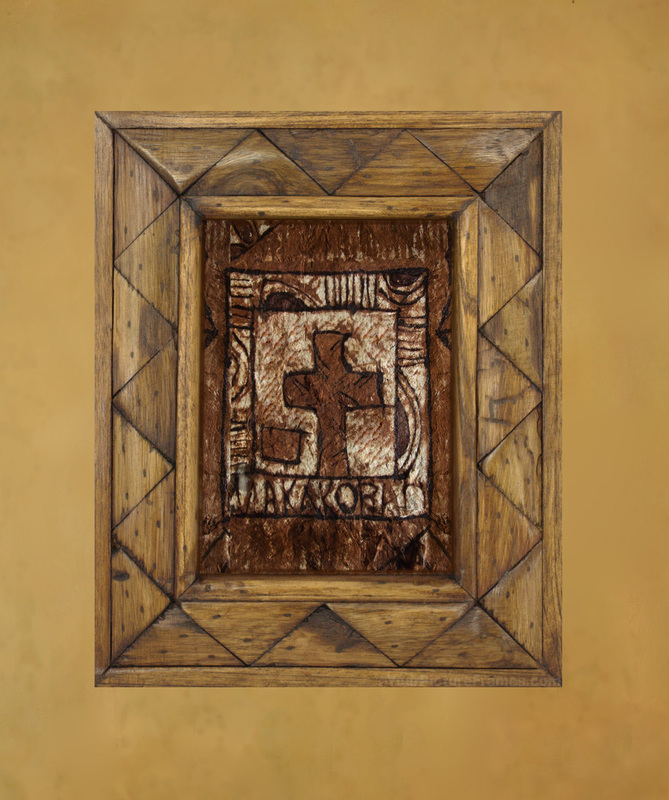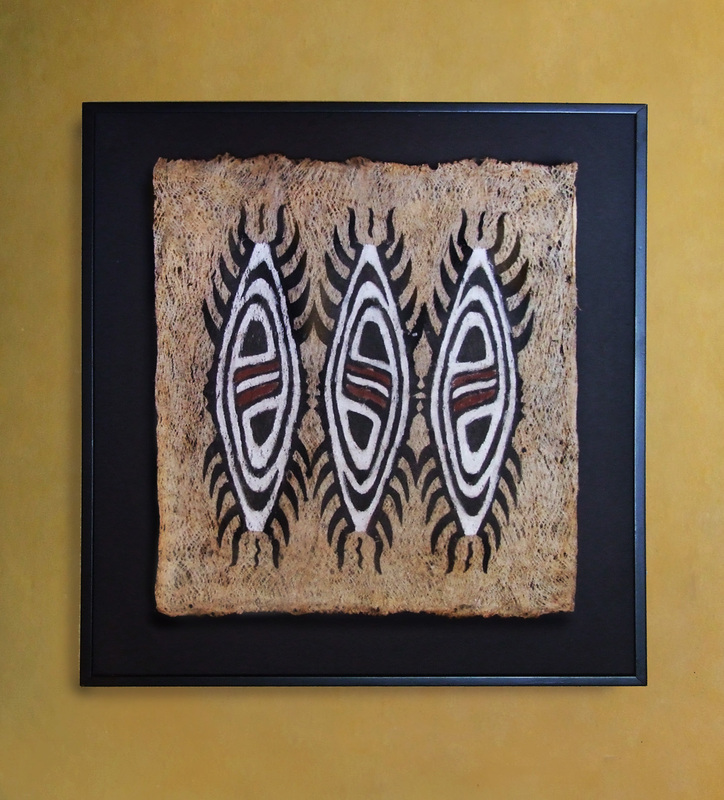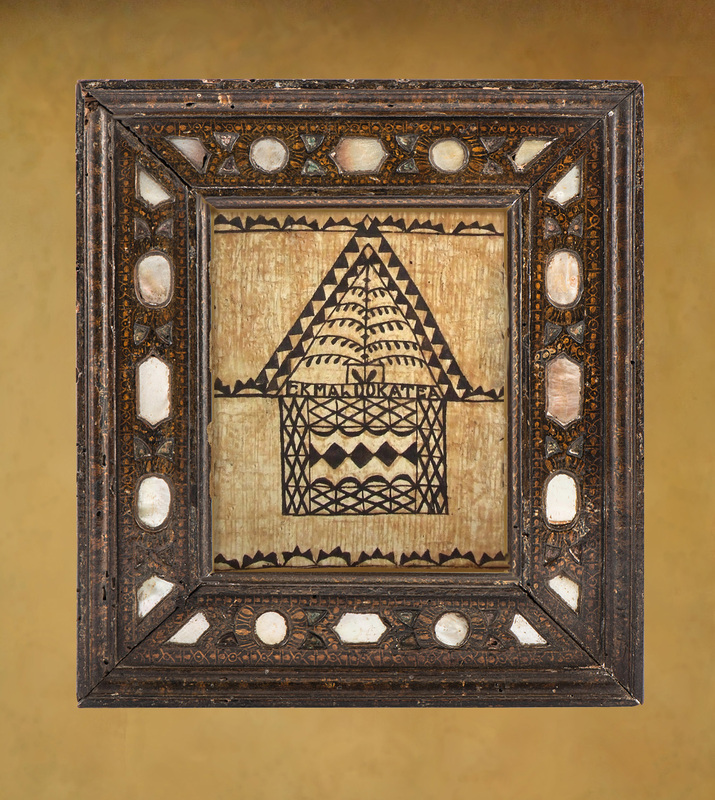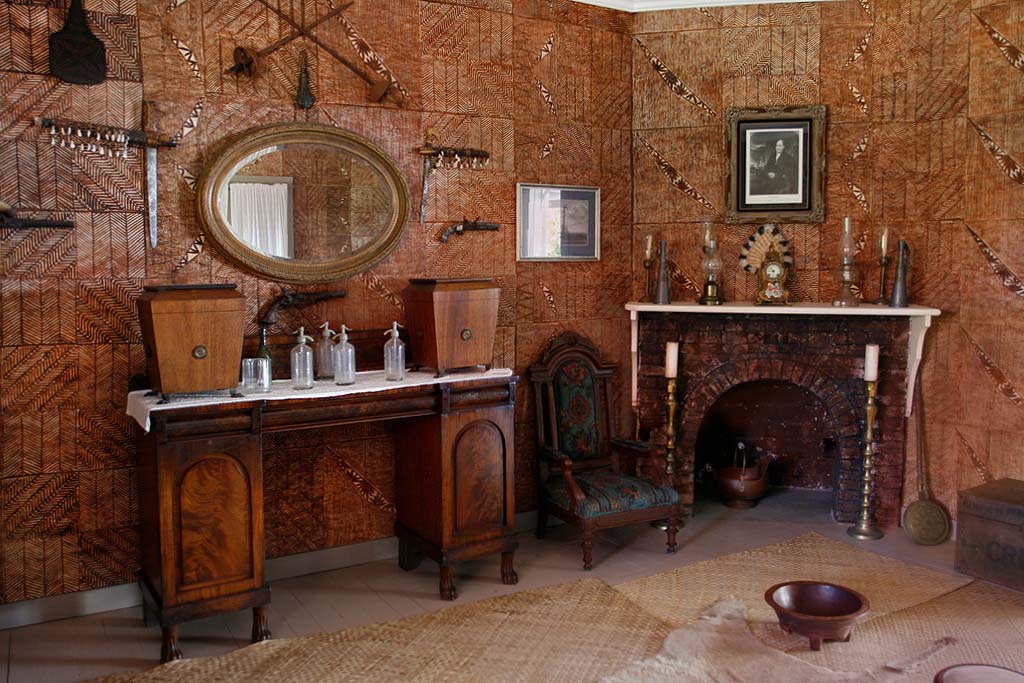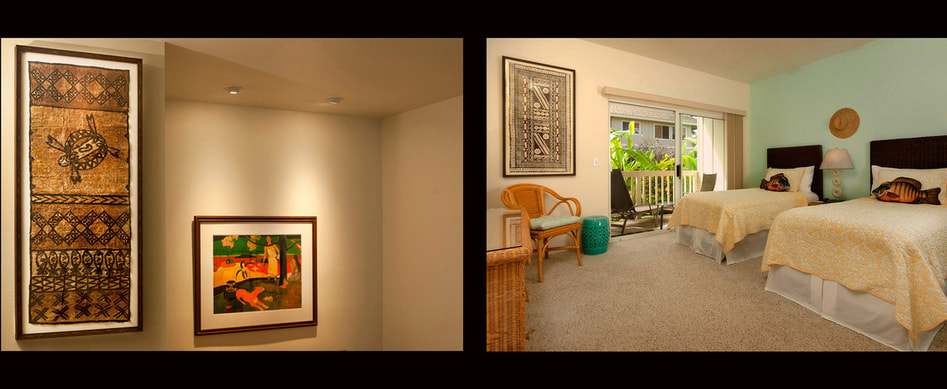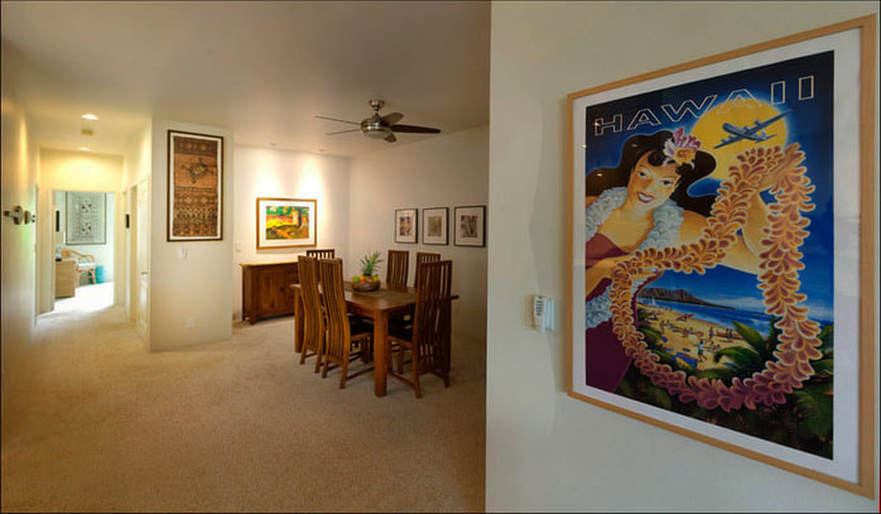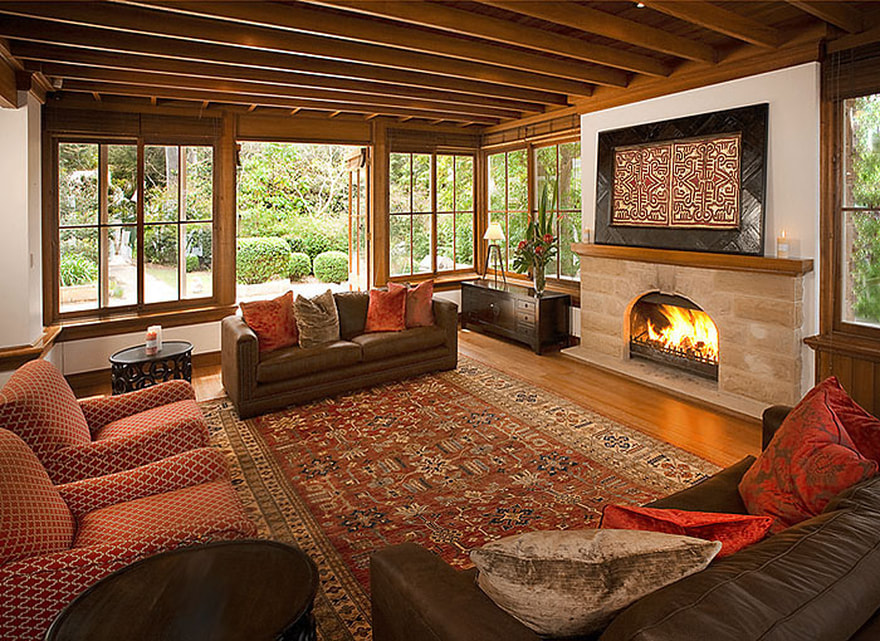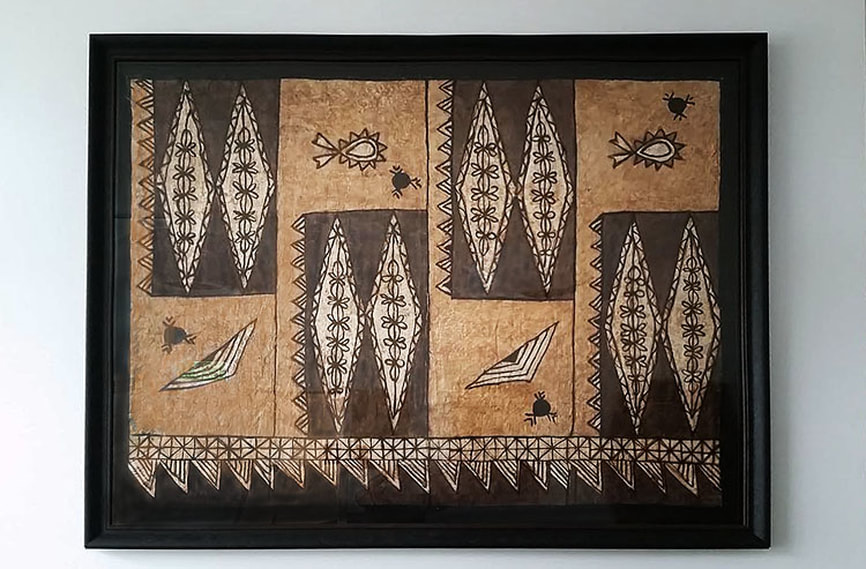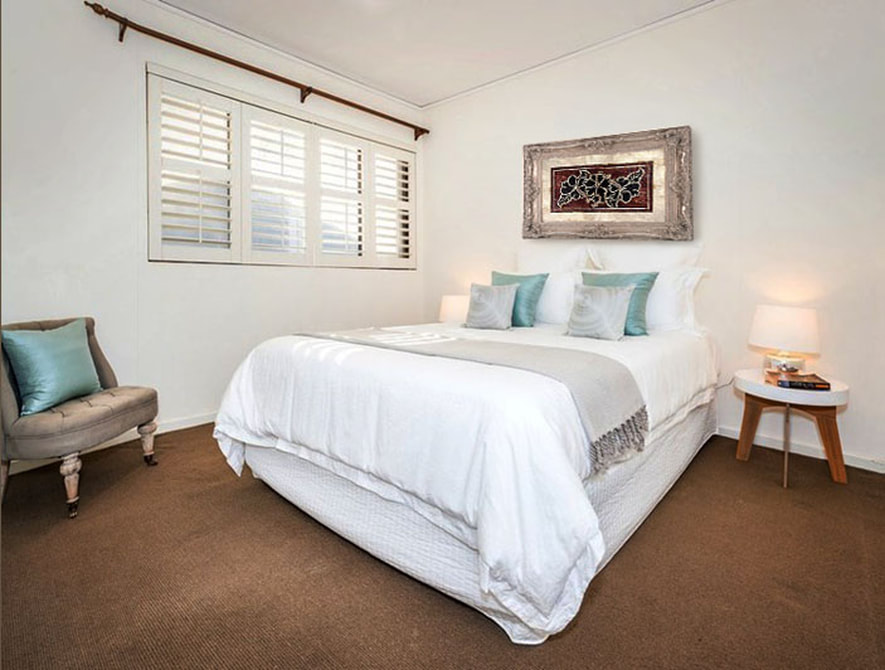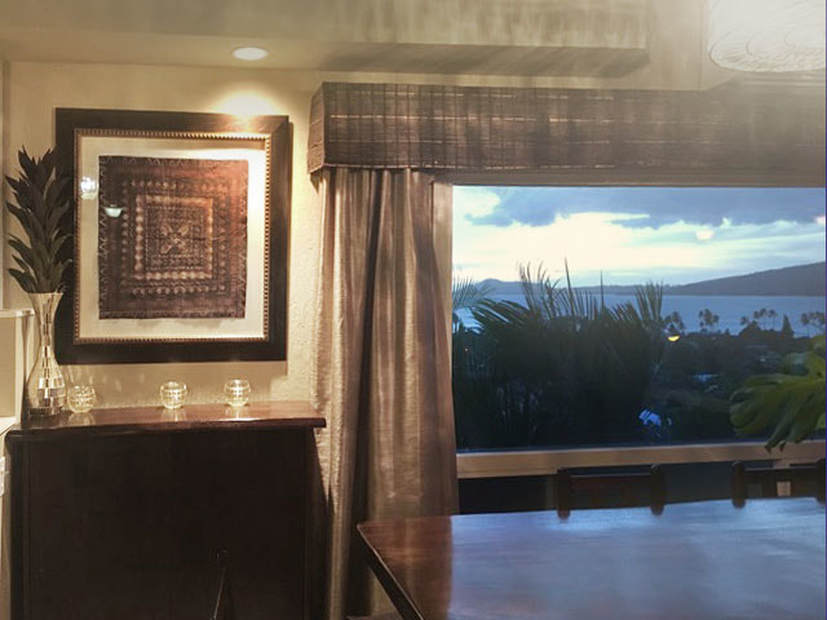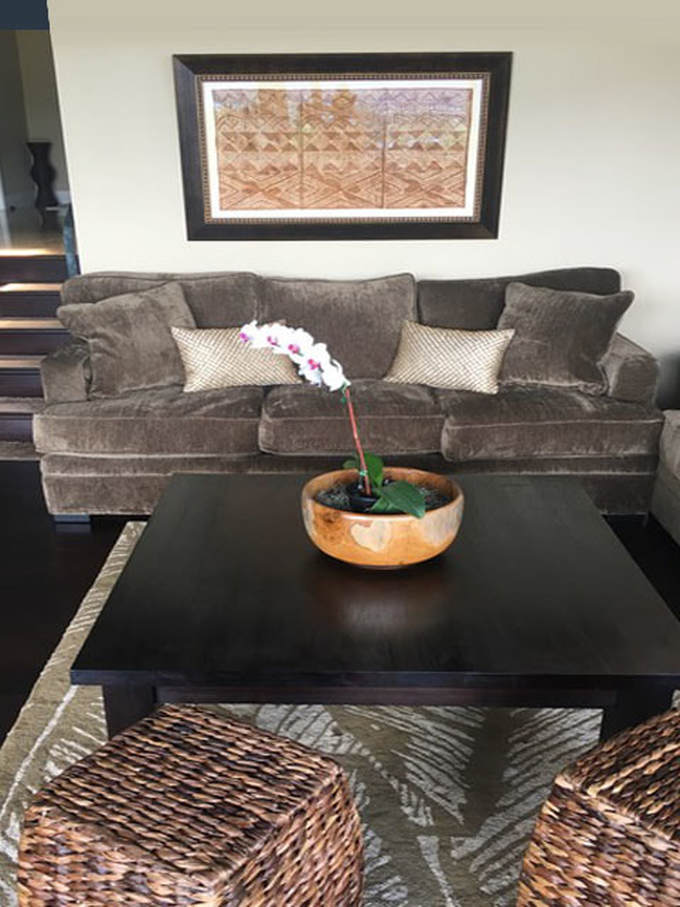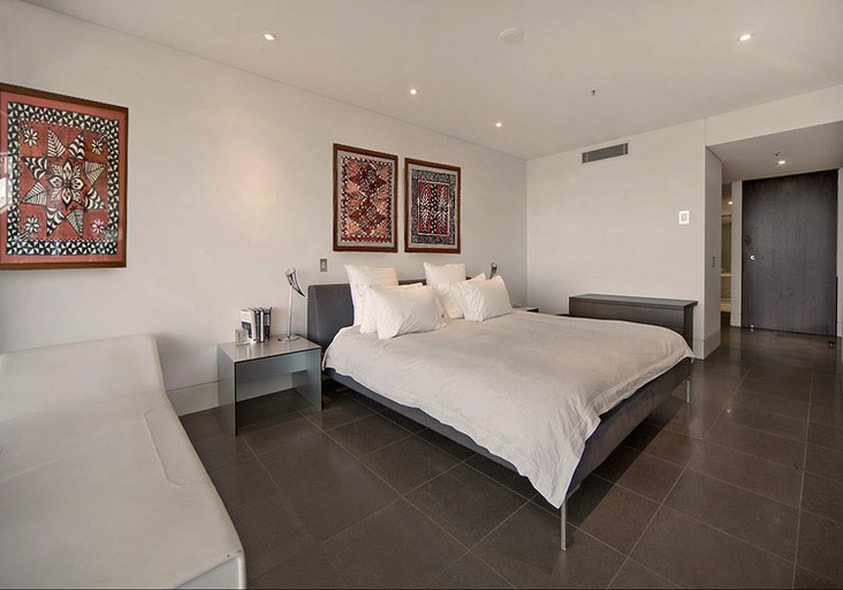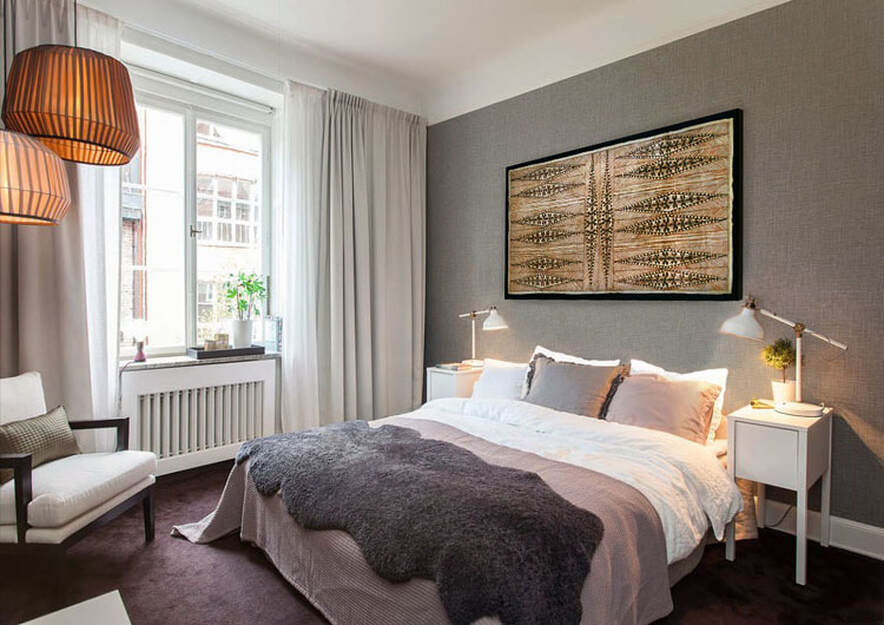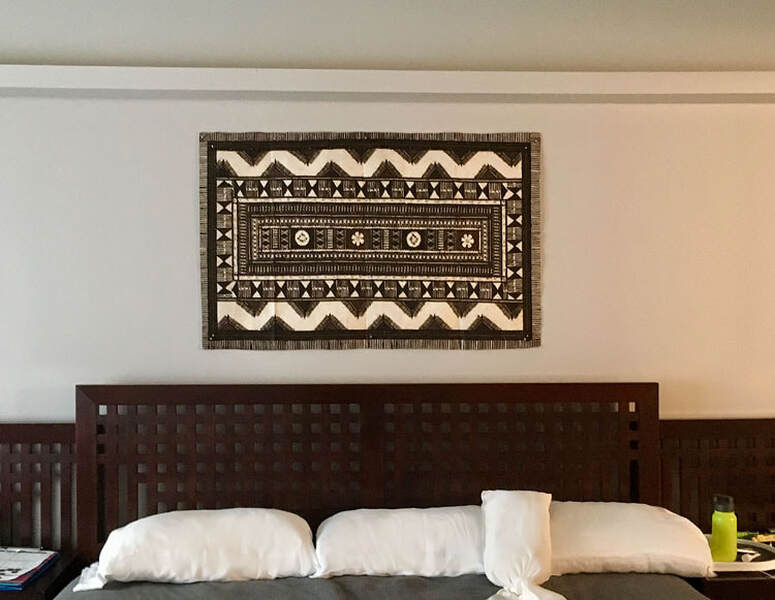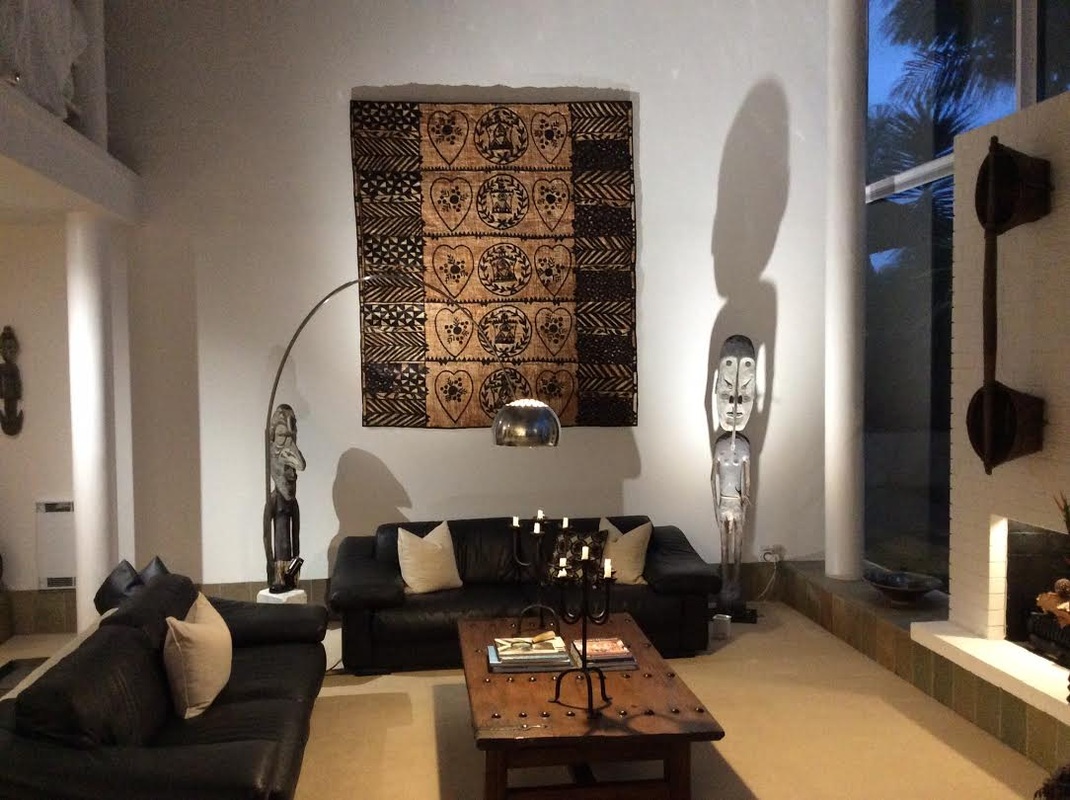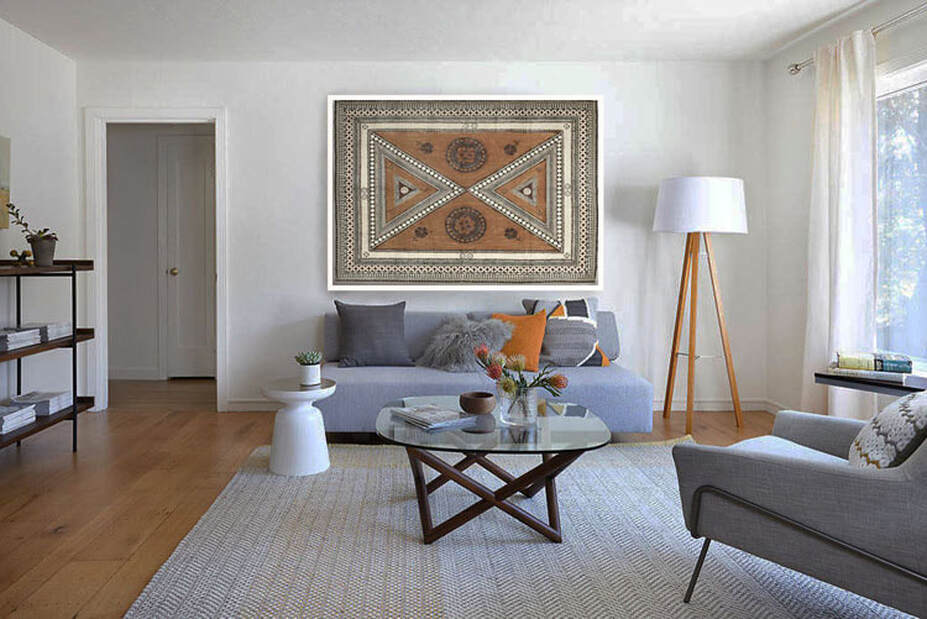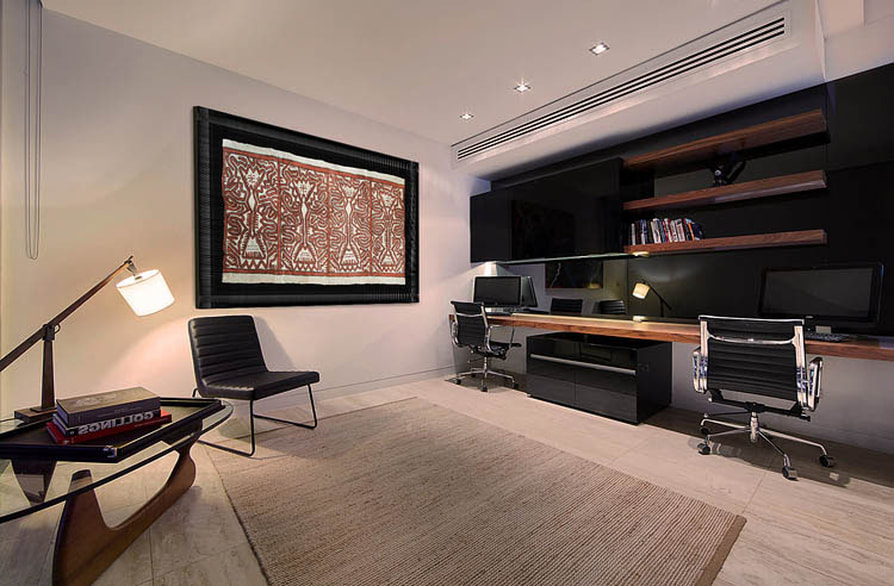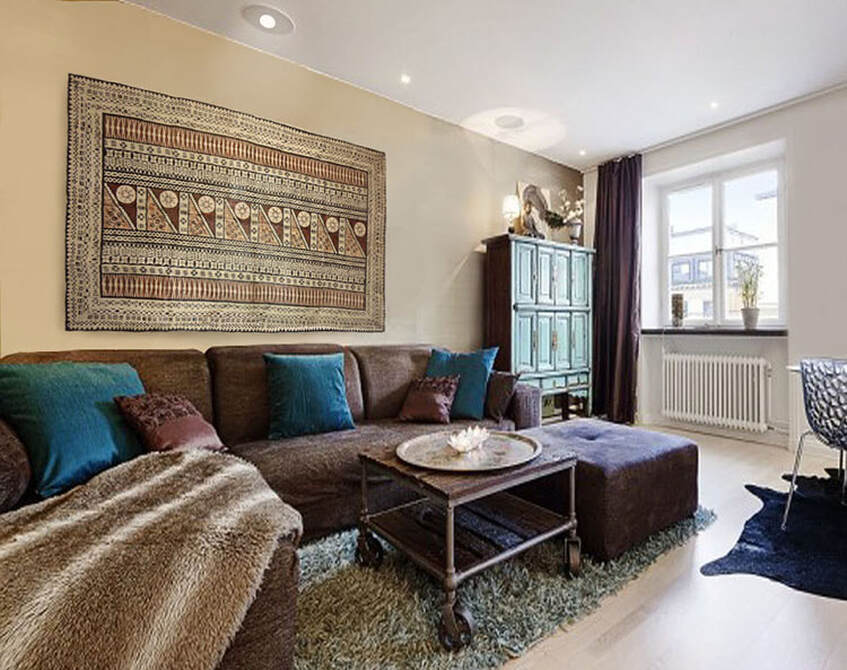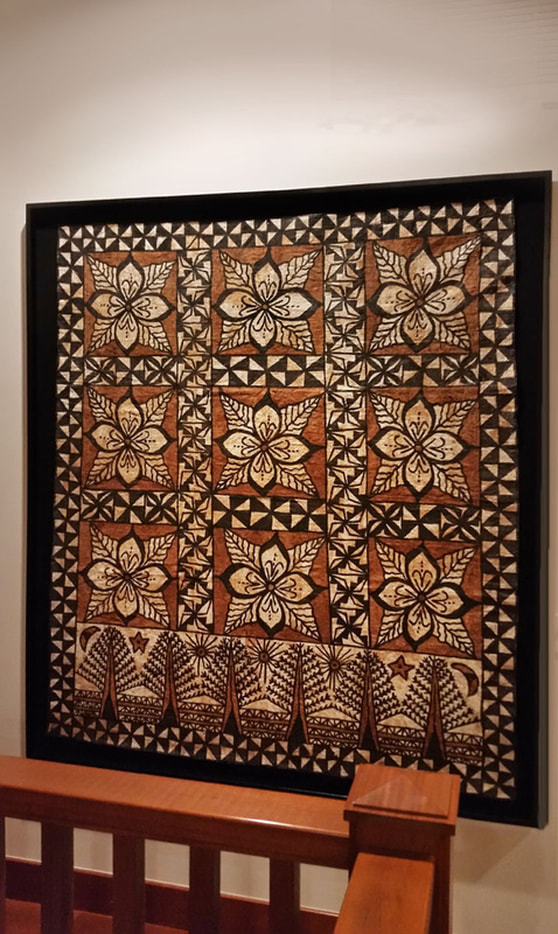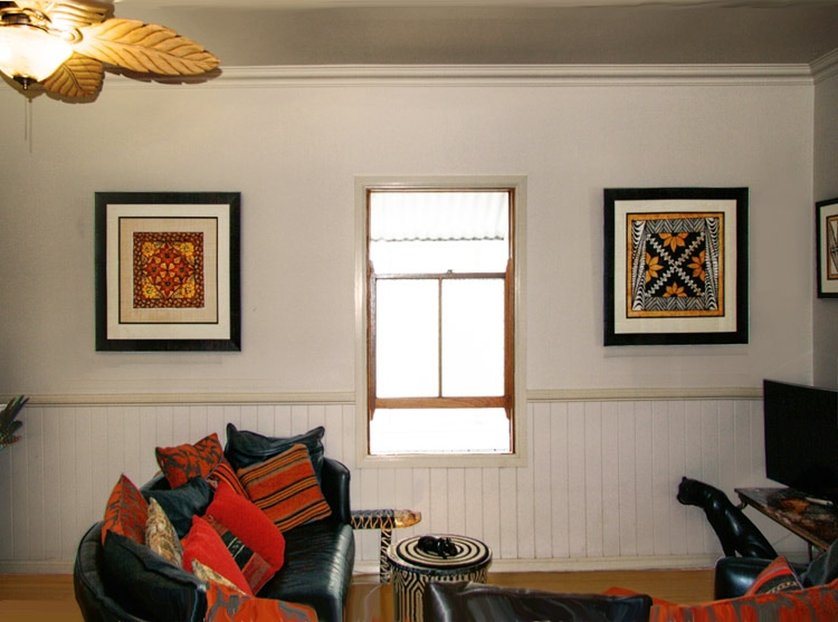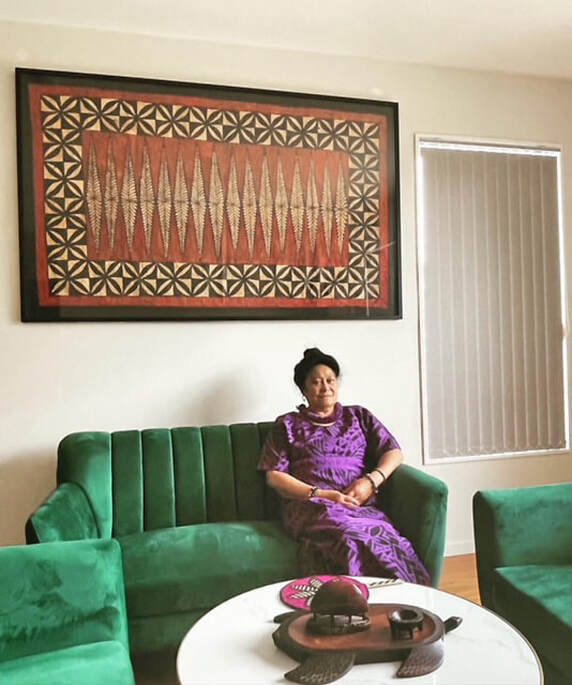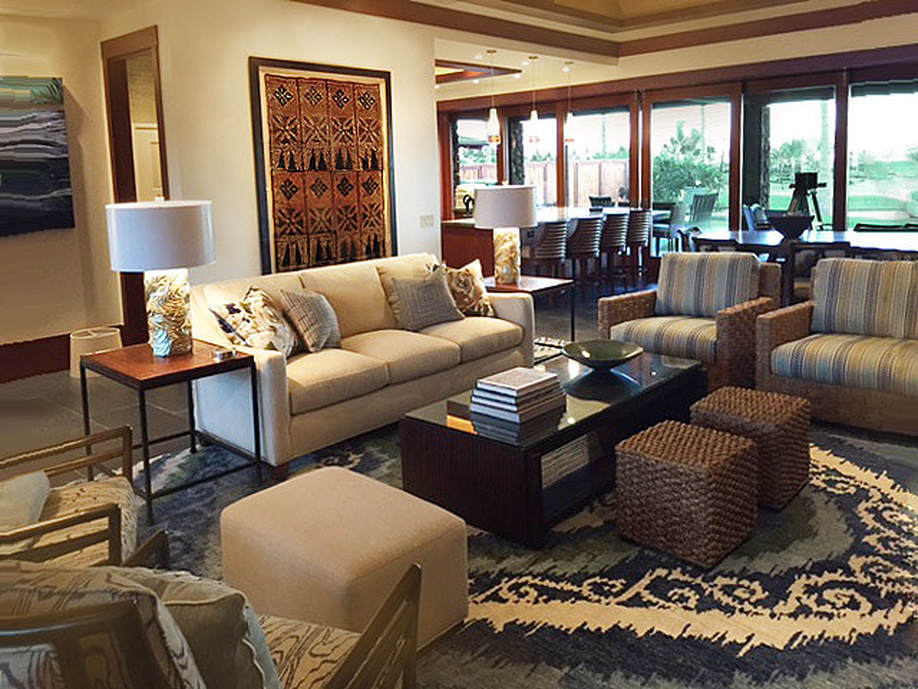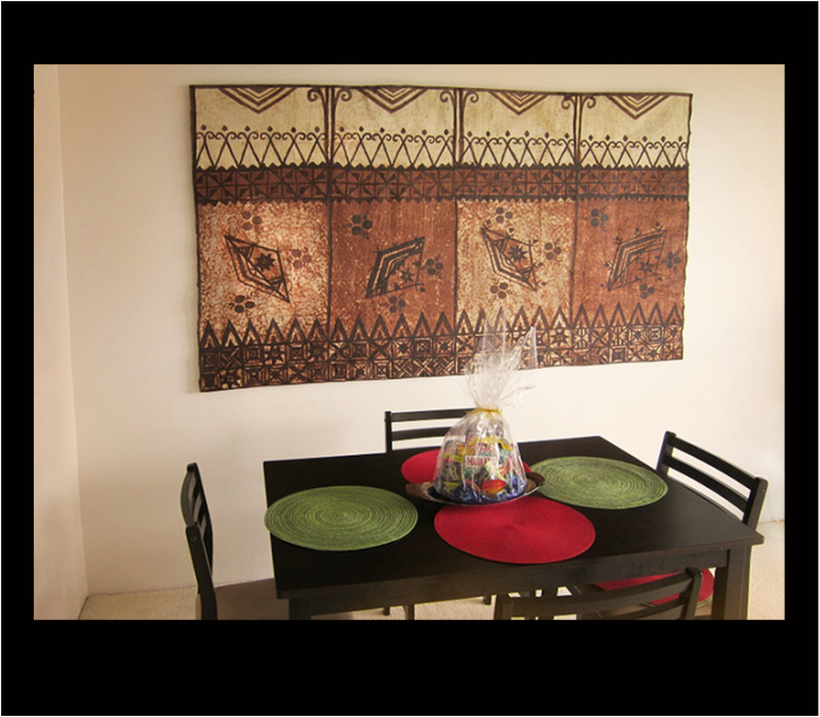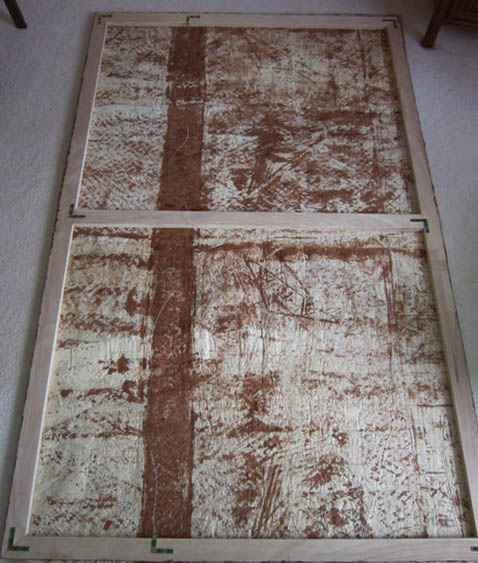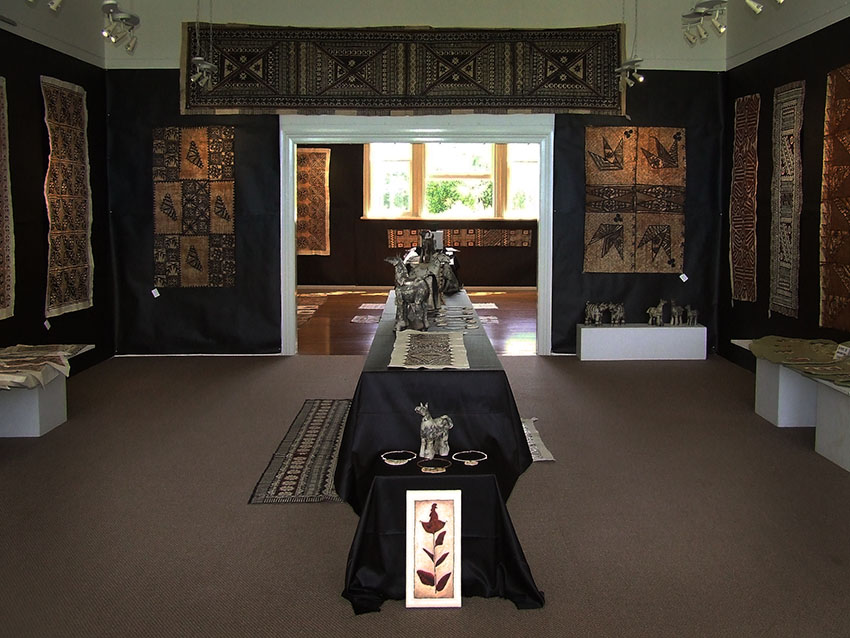HISTORY
Tapa cloths are made of bark fibers, a type of cloth made from the bast, or inner bark strips of specific trees, mainly the mulberry tree, although several species of breadfruit and fig trees are also used.
Tapa cloths have undergone a revival in the last couple of years and have become highly collectable, especially the older and vintage pieces.
Although it is still possible to buy Tapa cloths on the islands occasionally the intricacy and accuracy in design of the past is not being repeated by the younger generation whom are now producing the Tapa cloths.
I have been collecting vintage, traditional and rare Tapa cloths for about 34 years. As I've reached my limit space wise I decided to sell a large portion of my collection off.
As Tapa cloths are hand made with symbols and designs specific to a particular island group, region, or township, every single one is one of a kind and unique.
Over the last 10 years I have sold a large number of Tapa cloths here and overseas to private collectors, galleries, museums, schools, libraries and government departments.
Please contact me (details on the last page) if you would like to inquire or are interested to purchase any in this selection.
I have posted Tapa cloths all over the world and can provide postage cost to your particular area.
Please contact me if you are in NZ or in Australia, as postage will be much cheaper.
Paypal is the most convenient and easiest way to make payment, but other methods are accepted too.
All prices are quoted in $US.
More Tapa cloths will be added as time goes on…so please check now & then and join me on my journey following the trail of Tapa cloths.
Tapa cloths have undergone a revival in the last couple of years and have become highly collectable, especially the older and vintage pieces.
Although it is still possible to buy Tapa cloths on the islands occasionally the intricacy and accuracy in design of the past is not being repeated by the younger generation whom are now producing the Tapa cloths.
I have been collecting vintage, traditional and rare Tapa cloths for about 34 years. As I've reached my limit space wise I decided to sell a large portion of my collection off.
As Tapa cloths are hand made with symbols and designs specific to a particular island group, region, or township, every single one is one of a kind and unique.
Over the last 10 years I have sold a large number of Tapa cloths here and overseas to private collectors, galleries, museums, schools, libraries and government departments.
Please contact me (details on the last page) if you would like to inquire or are interested to purchase any in this selection.
I have posted Tapa cloths all over the world and can provide postage cost to your particular area.
Please contact me if you are in NZ or in Australia, as postage will be much cheaper.
Paypal is the most convenient and easiest way to make payment, but other methods are accepted too.
All prices are quoted in $US.
More Tapa cloths will be added as time goes on…so please check now & then and join me on my journey following the trail of Tapa cloths.
FREQUENTLY ASKED QUESTIONS
Can I combine postage cost on multiple purchases?
Yes, please use the contact form on the last page.
Do you offer a layby service, so I can pay the item(s) off in installments?
Yes, I do. However, the payments have to be completed within a 2 months time span.
Again, the contact form is the best way to inquire.
Do you have any Hawaiian Kapa available?
Real Hawaiian Kapa is extremely rare, as Hawaiian Kapa making discontinued around 1910/20's. It is often confused with (American) Samoan Siapo.
However, real Kapa is comparatively very different from that, it is a very fine and delicate cloth, often decorated with fine bands of intricate patterns, or stripes in a wide range of colors, resembling weaving from a loom.
It would sometimes take months to create a blanket from small strips, a sling for a newborn baby or just strips of Kapa to wear.
Examples of these can be found in the Bishop Museum.
I have never owned an authentic piece of Kapa in my collection, as it is too rare and valuable to source.
Around the 1970's there was a kind of revival of Kapa making in Hawaii, as local artisans Kanae Keawe and Puanani Van Dorpe studied the old techniques and tried to revive the art. However, it became quickly apparent that the process of making
Kapa is long and labor intensive and non profitable for the creators.
Example of Hawaiian Kapa Ca. 1880.
I
Slideshow of my Tapa cloth Collection
Artwork
Soon I will be adding more of my artwork to this website...It all started off by friends and people giving me pieces of Tapa cloth 'for your artwork',as they knew I am always creating mixed media art,incorporating shells, leaves, feathers, handmade papers, barkcloth,plaster and paperclay.
I ended up with lots of Tapa cloths,most of them far too good and precious to be cut up for art.
Thus I became very interested in the process of Tapa cloth making, the stories, art and the people who are making them.
Through the years I ended up with lots of tiny pieces from Tonga, Fiji, Samoa, PNG, Niue, Hawaii and Pygmy bark from Congo.
Last year I made a start to try and piece these small segments together,creating new patchwork landscapes on canvas with crossroads, signs and skies depicting unchartered new territories.
Tapa cloths all tell their own stories of past peoples and places, I am trying to continue the story in a different abstract way, imagining the future with echos from the past...
I ended up with lots of Tapa cloths,most of them far too good and precious to be cut up for art.
Thus I became very interested in the process of Tapa cloth making, the stories, art and the people who are making them.
Through the years I ended up with lots of tiny pieces from Tonga, Fiji, Samoa, PNG, Niue, Hawaii and Pygmy bark from Congo.
Last year I made a start to try and piece these small segments together,creating new patchwork landscapes on canvas with crossroads, signs and skies depicting unchartered new territories.
Tapa cloths all tell their own stories of past peoples and places, I am trying to continue the story in a different abstract way, imagining the future with echos from the past...
The history behind Tapa cloths.
The name Tapa, derived from the Samoan tapa referring to the plain border of a bark cloth sheet, is widely regarded as an early nineteenth century development coined during this active period of European contact.
The manufacture of tapa is an ancient craft that has been practiced for thousands of years throughout Polynesia and various parts of Melanesia.
Archaeological evidence has established that the cloth was also in production and widespread distribution in southeast Asia and Indonesia as early as 1,000 BCE.
While its manufacture has declined to the point of extinction in many parts of the world, it has survived to this day to become most commonly associated with the islands of the Southwest, Central and Eastern Pacific.
Each culture has its own indigenous name for bark cloth and each retains its own characteristic techniques for producing it.
In Tonga it is called Ngatu, in Samoa - Siapo, in Nuie - Hiapo and in Fiji it is known as Masi.
Generally the process involves the cultivation and harvesting of the desired plant (paper mulberry or breadfruit species), the bark of which is stripped to enable the removal of the soft pliable inner bark through a method of scraping. This inner fiber is then scraped again to remove any excess outer bark that might remain and then beaten on a wooden anvil to increase its size and soften its texture.
Several pieces of the refined cloth may be pasted together with a starchy glue substance (arrowroot) to form larger sheets.
The cloth is then finely decorated either by freehand or by taking imprints or rubbings from carved wooden templates. Many motifs are figurative designs based on the native flora and fauna of the natural environment found throughout the region, such as star fish, trochus shells, worms, centipedes, breadfruit leaves among others. The existence of geometric patterns and grids are also widespread among the islands. It is probable that the pre-European circular trade and later contacts between Tonga,Samoa and Fiji included exchanges of decorated cloth and thus enabled ongoing transmission of particular design concepts.
For instance the manulua is a widely used motif, it is a variation of triangles.
In Samoa the manulua is applied to both simplistic versions and a more flower like, wide petalled version of this motif.
In Tonga the motif is known a manulua potuuamanuka and if the upper half is painted onto the Ngatu it is claimed to be a representation of a bird in flight.
Used as a whole it represents 2 birds in flight, etc.
The most basic form of the Manulua is a motif in the shape of 4 inverted isosceles triangles, arranged diagonally in a cross form,this version of the motif is also commonly used on Fijian Masi.
There is a clear change in the choice making of design motifs in Tonga between the nineteenth and twentieth century.
More 'naturalistic' and 'organic' designs were being used,including patterns of trees, flowers and leaves.
Tapa has long served both utilitarian and ritualistic functions within the community.
Its economic value has seen it utilized as currency for the payment of canoes or buildings.
As a symbol of wealth and status, Tapa was often presented in ritual gift exchanges, for matrimonial dowry and it also featured prominently in large ceremonial occasions such as weddings, births and deaths particularly when connected with royal or high ranking families.
Traditionally when Tapas were presented during important ceremonies they were cut in pieces and offered to tribe members.
Tapa’s most common everyday use was assigned to loose fitting untailored garments such as loincloths, head wraps and skirts.
More recently it has been promoted as a tourist commodity.
A most informative video clip about Tapa cloths can be found here:
https://www.youtube.com/watch?v=T7Cap1ypBMg

How to get the folds out.
After unpacking the Tapa cloth there may be folds showing.
Depending on the type of bark cloth and the thickness some of them may be light,others deep.
Turn Tapa cloth reverse side up and place thick towel underneath.
In general best way to eradicate the folds is to spray fine mist of water into the folds.
The deeper the fold, the more moisture is required to get it straight.
Weigh down with heavy books/magazines for about a day.
Next 24 hrs will mostly see all folds straightened out, remove weights and hang out to air dry for a few hours.
Other option is to use a steam iron set to medium heat option (depending on thickness of bark cloth, the thinner it is the cooler the iron needs to be)
Make sure the ironing is done on the reverse side & with thick towel placed underneath.Don't forget air drying after this method too.
This method is however not recommended for very old/ precious or museum pieces.
How do I hang these?
An often recurring question,Tapa cloths can be displayed in several different ways.
A reusable magnetic display system is my preferred method these days.
It is strong, good-looking, and won't damage the tapa cloth.
Another easy way is to use velcro strips, or dots,(available at hardware and various outlets) that is for those Tapa cloths which are not too valuable, as the adhesive dots can be very hard to remove from the tapa without tearing the fibers.
Pushpins or needle pins can be used as well.
Other option is using small bamboo rods, wooden dowels or strips incised to fit the cloth,then glued in top & bottom.
This will keep the Tapa cloth straight and can look very good, especially when a complimentary wood is chosen.
Framing the Tapa cloths apart from extending the lifespan adds a touch of sophistication.
I particularly like the framing without glass, just displayed on a black background with a wooden shadowbox surround.
This way the texture and colors will be accentuated, while the shadowbox adds depth.
Alternatively a double Lucite frame is a good way to preserve & protect the Tapa cloths,
this method is often used in museums.
A friend successfully stapled a Tapa cloth to a boring old office wall, however, care has to be taken on removal.
Last option would be using blue or white tack, because it may cause damage to the cloth when it is being removed.
There are many standard frames available on the market.
To arrive at a framers shop can be a bedazzling experience with so many different styles & colors of framing materials to choose from.
Of course a lot depends on the space where the Tapa cloth is going to be displayed.
Tapa cloths can look good in any interior,whether it is a modern setting or a classic interior.
The right framing can increase the value of the artwork considerably, but it can also decrease the value by choosing the wrong frame.
Please scroll below for examples of framing options.
THE BEAUTY OF TAPA CLOTHS
Ways of displaying Tapa cloths around the home and in the work place to add a touch of the Tropics from the Pacific Islands ...
A while back I sold a PNG Bark cloth 'Journeys of Significance' to a lady who is an artist, Sandy Freckleton Gagon, she sent me this photo of an amazing painting she made with the PNG Bark cloth as a back drop, this is her website if you'd like to see more of her work:
http://sandyfreckletongagon.com/StillLifewithBasilisk.htm
http://sandyfreckletongagon.com/StillLifewithBasilisk.htm
Photos from Tapa exhibitions
Wedding Outfits
There are many times when I'm asked to assist in choosing Pacific themed wedding outfits.
I don't make wedding outfits myself, but have advised brides to be on design. A dress for this most special day can be turned into a true piece of designer wear.
A lot of the making can be done by a creative bride or friend, it doesn't have to break to bank either. Most outfits consist of combining different layers, which can be a Tapa skirt & a shirt, adding Tapa cloth sashes, collars and cut out pieces to be appliqued onto silk, chiffon or plain cotton. Adding shells, woven leaves, raffia edges, lace, flax woven flowers, plaited twine, beads of nuts & seeds etc.
A few examples here to get inspired...
There are many times when I'm asked to assist in choosing Pacific themed wedding outfits.
I don't make wedding outfits myself, but have advised brides to be on design. A dress for this most special day can be turned into a true piece of designer wear.
A lot of the making can be done by a creative bride or friend, it doesn't have to break to bank either. Most outfits consist of combining different layers, which can be a Tapa skirt & a shirt, adding Tapa cloth sashes, collars and cut out pieces to be appliqued onto silk, chiffon or plain cotton. Adding shells, woven leaves, raffia edges, lace, flax woven flowers, plaited twine, beads of nuts & seeds etc.
A few examples here to get inspired...
More inspiration here, thanks to Hema Fifita :
https://www.youtube.com/watch?v=fWYMAoFGMs4
Fact is that my collection of Tapa cloths grew as a hobby,not a business.
I just love the art of Tapa making,and admire the people who are still creating them on the Pacific Islands.
In Tonga and Fiji the art is still alive and well,
in Samoa there is a revival mainly focusing on the tourist market..
The prices which I quote on my website are not an estimated value of those cloths,
I am selling them well below what they are worth.
This is because I want to make them available to everyone,share the beauty of Tapa and hopefully play a small
part in the revival of the traditional art of Tapa making.












